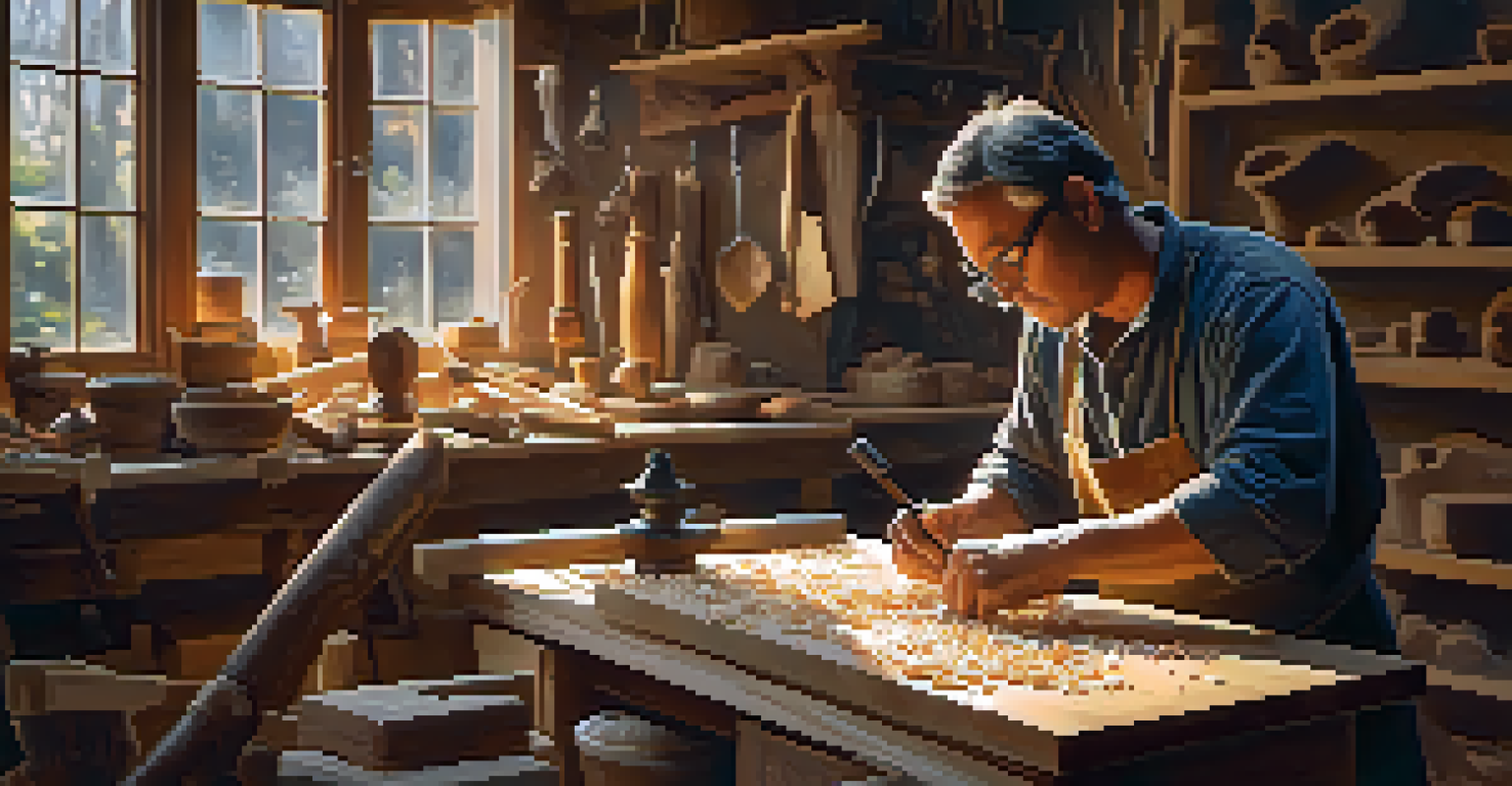Building Your Brand in the Carving Industry

Understanding the Carving Market Landscape
To build a successful brand in the carving industry, it's crucial to understand the market landscape. This includes identifying your target audience and recognizing key trends that influence consumer behavior. For instance, are your potential customers more interested in traditional wood carvings or modern, abstract pieces?
The best marketing doesn't feel like marketing.
Researching competitors is equally important. By analyzing what others in the industry are doing, you can find gaps in the market that your brand can fill. This not only helps you position your offerings but also allows you to differentiate your brand from others.
Lastly, stay updated on industry innovations. The carving world, like any other, evolves with technology and art trends. Embracing new techniques or materials can give your brand a competitive edge and attract a wider audience.
Defining Your Unique Selling Proposition (USP)
Your Unique Selling Proposition, or USP, is what makes your brand stand out from the competition. It's essential to pinpoint what you do best and how it benefits your customers. For example, if you specialize in sustainable materials, that can be a strong selling point for environmentally conscious buyers.

Think of your USP as the heart of your brand. It should resonate with your target audience and evoke an emotional response. This could be through storytelling, showcasing the craftsmanship behind your pieces, or emphasizing the cultural significance of your carvings.
Know Your Market Landscape
Understanding your target audience and industry trends is essential for carving out a successful brand.
Once you've defined your USP, make it a focal point in your marketing efforts. Whether through social media, your website, or in-person events, consistently communicate what sets you apart to build brand recognition.
Creating a Strong Visual Identity
A strong visual identity is crucial for any brand, especially in the carving industry where aesthetics play a significant role. This includes your logo, color palette, and overall design style. Ensure that these elements reflect the essence of your craftsmanship and resonate with your target audience.
Creativity is intelligence having fun.
For instance, if your carvings are intricate and detailed, your branding should convey that level of sophistication. A sleek, modern logo and a refined color scheme can enhance the perception of your work. Think of your visual identity as the packaging for your artistic talent.
Moreover, your visual identity should be consistent across all platforms—your website, social media, and any marketing materials. This consistency helps build trust and familiarity, making it easier for potential customers to recognize and remember your brand.
Building an Engaging Online Presence
In today's digital world, having a strong online presence is essential for any brand. Start by creating a user-friendly website that showcases your carvings, tells your story, and provides an easy way for customers to purchase your work. Remember, your website is often the first impression potential customers will have of your brand.
Social media platforms like Instagram and Pinterest are also fantastic tools for visual industries like carving. Share high-quality images of your work, behind-the-scenes processes, and engage with your audience through comments or live sessions. This not only builds community but also showcases your personality as an artist.
Define Your Unique Selling Proposition
Establishing a clear USP helps differentiate your brand and resonates with your customers.
Don't forget the power of content marketing. Consider starting a blog where you share tips, tutorials, or insights into the carving process. This positions you as an expert in your field and can drive traffic to your website, ultimately increasing interest in your brand.
Networking and Collaborating with Others
Building your brand in the carving industry isn't just about your own work; it's also about connecting with others. Attend local art shows, craft fairs, and workshops to meet fellow artists and potential customers. These events provide excellent opportunities to showcase your work and gather valuable feedback.
Collaborating with other artists or brands can also expand your reach. For instance, consider partnering with a local gallery for an exhibition or collaborating with a complementary craftsperson for a unique project. Such partnerships can introduce your work to new audiences and create exciting opportunities.
Networking isn't just about promotion; it's about building relationships. Engaging with others in your field fosters a supportive community and can lead to valuable insights, shared resources, and potential collaborations that benefit everyone involved.
Leveraging Customer Testimonials and Reviews
Customer testimonials and reviews can significantly enhance your brand's credibility in the carving industry. Happy customers are often willing to share their positive experiences, which can be a powerful marketing tool. Encourage satisfied clients to leave reviews on your website or social media pages.
Showcasing these testimonials not only builds trust with potential customers but also humanizes your brand. Sharing real stories about how your carvings have impacted people can create an emotional connection and inspire others to make a purchase.
Engage with Your Community
Networking and collaborating with others in the carving industry can expand your reach and foster valuable relationships.
Additionally, consider highlighting customer-generated content, like pictures of your carvings in their homes. This not only showcases your work in real-life settings but also encourages community engagement and fosters loyalty among your customers.
Investing in Continuous Learning and Development
The carving industry, like any creative field, is constantly evolving. Investing in your skills through workshops, online courses, or mentorships can keep you ahead of the curve. This not only enhances your craftsmanship but also shows your commitment to your art and your brand.
Consider exploring different carving techniques or materials to expand your repertoire. This versatility can open new avenues for creativity and help you cater to a broader audience. Plus, it can inspire fresh ideas and innovations in your work.

Networking with fellow artists during these learning opportunities can also provide valuable insights and support. Sharing knowledge with others fosters a collaborative spirit and can lead to exciting projects and partnerships that benefit your brand.
Measuring Success and Adapting Your Strategy
Finally, measuring your success is crucial for the growth of your brand in the carving industry. Utilize analytics tools to track your website traffic, social media engagement, and sales performance. Understanding these metrics helps you identify what works and what doesn’t.
Don't be afraid to adapt your strategy based on these insights. If a particular type of carving is gaining popularity, consider producing more of that style or promoting it through targeted marketing. Flexibility is key to staying relevant in a competitive market.
Additionally, regularly seek feedback from customers and peers. Their insights can provide fresh perspectives and help you refine your offerings, ultimately strengthening your brand and ensuring long-term success.